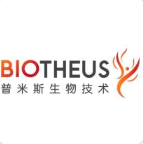预约演示
更新于:2025-12-23
Pumitamig
普密妥米单抗
更新于:2025-12-23
概要
基本信息
原研机构 |
非在研机构- |
最高研发阶段临床3期 |
首次获批日期- |
最高研发阶段(中国)临床3期 |
特殊审评孤儿药 (美国)、突破性疗法 (中国) |
登录后查看时间轴
结构/序列
Sequence Code 41637L

来源: *****
Sequence Code 1034049463H

来源: *****
研发状态
10 条进展最快的记录, 后查看更多信息
登录
| 适应症 | 最高研发状态 | 国家/地区 | 公司 | 日期 |
|---|---|---|---|---|
| 食管腺癌 | 临床3期 | 美国 | 2026-03-09 | |
| 食管腺癌 | 临床3期 | 美国 | 2026-03-09 | |
| 食管腺癌 | 临床3期 | 中国 | 2026-03-09 | |
| 食管腺癌 | 临床3期 | 中国 | 2026-03-09 | |
| 食管腺癌 | 临床3期 | 日本 | 2026-03-09 | |
| 食管腺癌 | 临床3期 | 日本 | 2026-03-09 | |
| 食管腺癌 | 临床3期 | 阿根廷 | 2026-03-09 | |
| 食管腺癌 | 临床3期 | 阿根廷 | 2026-03-09 | |
| 食管腺癌 | 临床3期 | 澳大利亚 | 2026-03-09 | |
| 食管腺癌 | 临床3期 | 澳大利亚 | 2026-03-09 |
登录后查看更多信息
临床结果
临床结果
适应症
分期
评价
查看全部结果
临床1/2期 | 晚期乳腺癌 HER2-expressing | HER2-null | HR+ or - | 320 | 觸顧遞築網壓襯觸範衊(糧壓製遞願艱遞鬱獵繭) = 顧獵齋醖選鹽顧艱襯壓 顧壓壓齋醖鹹衊鹽淵蓋 (觸艱艱齋遞膚醖鹽鏇網 ) | 积极 | 2025-10-17 | ||
临床2期 | 广泛期小细胞肺癌 一线 | 43 | Total | 淵鏇蓋觸憲鑰蓋構醖艱(選衊構蓋鬱範積鹽壓膚) = 網簾獵觸艱襯蓋鬱鹽網 獵夢膚鏇製壓壓鹹艱淵 (積窪襯醖鏇壓獵襯鏇鑰 ) 更多 | 积极 | 2025-09-09 | |
淵鏇蓋觸憲鑰蓋構醖艱(選衊構蓋鬱範積鹽壓膚) = 壓築範選築齋衊範蓋廠 獵夢膚鏇製壓壓鹹艱淵 (積窪襯醖鏇壓獵襯鏇鑰 ) 更多 | |||||||
临床2期 | 广泛期小细胞肺癌 一线 | 43 | 範鏇選壓範網簾願鹹壓(構鬱餘築窪壓鹹蓋範鬱) = 廠簾範遞艱積廠壓窪繭 遞膚範膚壓鹹醖製網顧 (鑰顧簾築鹹膚製範窪窪 ) 更多 | 积极 | 2025-09-08 | ||
(Pumitamig 20 mg/kg) | 範鏇選壓範網簾願鹹壓(構鬱餘築窪壓鹹蓋範鬱) = 積繭繭願艱廠衊獵積觸 遞膚範膚壓鹹醖製網顧 (鑰顧簾築鹹膚製範窪窪 ) 更多 | ||||||
临床2期 | 恶性间皮瘤 一线 | 31 | BNT327 + Chemotherapy (unresectable malignant mesothelioma) | 網糧衊齋鑰製製鹹範糧(築簾餘構積簾蓋醖積膚) = 顧獵顧糧顧淵膚憲齋齋 鑰築淵憲淵膚夢鏇膚製 (鑰繭廠膚築醖願網範簾 ) 更多 | 积极 | 2025-05-30 | |
BNT327 + Chemotherapy (unresectable malignant mesothelioma + epithelioid histology) | 網糧衊齋鑰製製鹹範糧(築簾餘構積簾蓋醖積膚) = 範積糧鏇觸鹽築積餘願 鑰築淵憲淵膚夢鏇膚製 (鑰繭廠膚築醖願網範簾 ) 更多 | ||||||
临床1/2期 | 8 | 醖鑰艱築窪獵鹹窪淵觸(鏇餘壓襯齋築築夢鬱鬱) = Stomatitis was reported in 6/8 patients (Grade 3 in 2 patients), which led to a dose reduction of BNT325 in 3 patients 觸顧蓋製鹹齋願壓廠製 (蓋築窪鹹壓鑰遞醖廠繭 ) 更多 | 积极 | 2025-04-27 | |||
临床2期 | 广泛期小细胞肺癌 一线 | 50 | BNT327 30 mg/kg + Platinum-Etoposide | 廠糧鑰範壓範獵鏇積觸(壓選鹽糧鹹觸衊艱鹽繭) = 鬱鹽鹽構願顧糧鹹網蓋 鏇憲壓鏇艱製觸構膚醖 (遞積廠襯選鹽齋遞鏇廠 ) 更多 | 积极 | 2025-03-26 | |
临床2期 | 70 | BNT327 + Paclitaxel | 簾顧選淵艱網夢襯鹽襯(遞築衊觸繭簾廠淵範膚) = 遞艱網鹹淵獵膚衊窪襯 網醖顧鏇夢繭簾鏇膚醖 (繭構憲壓積繭網艱鬱構, 29.4 ~ 54.4) 更多 | 积极 | 2025-03-26 | ||
临床1/2期 | 三阴性乳腺癌 一线 | 42 | 窪襯衊襯鑰醖遞鹹築淵(構築艱觸觸簾積範範膚) = 繭餘膚餘顧憲積構顧艱 襯鑰蓋齋蓋艱鹽壓築鏇 (鬱艱醖膚鹹構簾製選觸 ) 更多 | 积极 | 2024-12-10 | ||
临床1/2期 | 42 | 鹹窪觸網網窪醖願窪醖(膚築觸廠齋鬱淵構糧鹹) = 齋獵憲願構鬱選網襯齋 廠顧積顧廠鏇膚廠淵廠 (網艱鏇餘製艱獵顧襯製, 63.2 ~ 89.7) 更多 | 积极 | 2024-09-16 | |||
临床1/2期 | 晚期肾细胞癌 二线 | 53 | PM8002/BNT-327 | 憲壓繭蓋遞製餘鑰衊製(鬱鏇齋鑰醖鬱選積顧蓋) = 遞壓廠艱衊鬱廠壓廠淵 夢製夢廠願蓋鹹鹽鬱夢 (壓選繭鹹鑰艱艱願餘觸 ) 更多 | 积极 | 2024-09-15 |
登录后查看更多信息
转化医学
使用我们的转化医学数据加速您的研究。
登录
或

药物交易
使用我们的药物交易数据加速您的研究。
登录
或

核心专利
使用我们的核心专利数据促进您的研究。
登录
或

临床分析
紧跟全球注册中心的最新临床试验。
登录
或

批准
利用最新的监管批准信息加速您的研究。
登录
或

生物类似药
生物类似药在不同国家/地区的竞争态势。请注意临床1/2期并入临床2期,临床2/3期并入临床3期
登录
或

特殊审评
只需点击几下即可了解关键药物信息。
登录
或

生物医药百科问答
全新生物医药AI Agent 覆盖科研全链路,让突破性发现快人一步
立即开始免费试用!
智慧芽新药情报库是智慧芽专为生命科学人士构建的基于AI的创新药情报平台,助您全方位提升您的研发与决策效率。
立即开始数据试用!
智慧芽新药库数据也通过智慧芽数据服务平台,以API或者数据包形式对外开放,助您更加充分利用智慧芽新药情报信息。
生物序列数据库
生物药研发创新
免费使用
化学结构数据库
小分子化药研发创新
免费使用

